Procedure, Illustration, Solution | Accountancy - Balancing of ledger accounts | 11th Accountancy : Chapter 4 : Ledger
Chapter: 11th Accountancy : Chapter 4 : Ledger
Balancing of ledger accounts
Balancing of ledger accounts
After posting
the transactions, the business person is interested to know the position of
various accounts. For this purpose, the accounts are balanced at the end of the
accounting period or after a certain period to ascertain the net balance in
each account. Balancing means that the debit side and credit side amounts are
totalled and the difference between the total of the two sides is placed in the
amount column as ‘Balance c/d’ on the side having lesser total, so that the
total of both debit and credit columns are equal.
When the
total of the debit side is more than the total of credit side the difference is
debit balance and is placed on the credit side as ‘By Balance c/d’. If the
credit side total is more than the total of debit side, the difference is
credit balance and is placed on the debit side as ‘To Balance c/d’.
1. Procedure for balancing an account
Following is
the procedure for balancing an account:
i.
The debit
and credit columns of an account are to be totalled separately.
ii.
The
difference between the two totals is to be ascertained.
iii.
The
difference is to be placed in the amount column of the side having lesser
total. ‘Balance c/d’ is to be entered in the particulars column against the
difference and in the date column the last day of the accounting period is
entered.
iv.
Now both
the debit and credit columns are to be totalled and the totals will be equal.
The totals of both sides are to be recorded in the same line horizontally. The
total is to be distinguished from other figures by drawing lines above and
below the amount.
v.
The
difference has to be brought down to the opposite side below the total.
‘Balance b/d’ is to be entered in the particulars column against the difference
brought down and in the date column, the first day of the next accounting
period is entered.
vi.
If the
total on the debit side of an account is higher, the balancing figure is debit
balance and if the credit side of an account has higher total, the balancing
figure is credit balance. If the two sides are equal, that account will show
nil balance.
The rules for determining the balance is as
follows:

It may be
noted that totalling of a ledger account is known as casting. At the time of
balancing an account, debit balance is the balancing figure on the credit side
and credit balance is the balancing figure on the debit side. This balance is
known as closing balance. The closing balance of an accounting period is the
opening balance of the next accounting period.
Tutorial
note
i.
Cash
account cannot have a credit balance
ii.
Balances
in real accounts and personal accounts are carried forward to the next
accounting year.
iii.
Balances
in the nominal accounts are not carried forward to next accounting year. They
are closed by transferring to trading and profit and loss account.
iv.
Instead
of the abbreviations c/d and b/d the abbreviations c/o and b/o (carried over
and brought over) may be recorded if the balance is taken to the next
successive page. If the balance is taken to a different non-successive page the
abbreviation c/f and b/f (carried forward and brought forward) may be used.
Illustration 5
Thmizhanban
started book selling business on 1st January, 2018. Following are the transac-tions
took place in his business for the month of January, 2018. Pass journal entries
and pre-pare ledger accounts.
2018
Jan. 1 Started business with cash Rs. 3,00,000
Jan. 2 : Opened
bank account by depositing Rs. 2,00,000
Jan. 5
: Goods bought from Tamilnadu Textbook
Corporation for cash Rs. 10,000
Jan. 15 : Sold goods to MM Traders for cash Rs. 5,000
Jan.
22 : Purchased goods from X and
Co. for Rs. 15,000 and the payment is made through net
banking.
Jan. 25 : Sold
goods to Y and Co. for Rs. 30,000
and the payment is received through NEFT
Solution
In the books of Thamizhanban
Journal entries
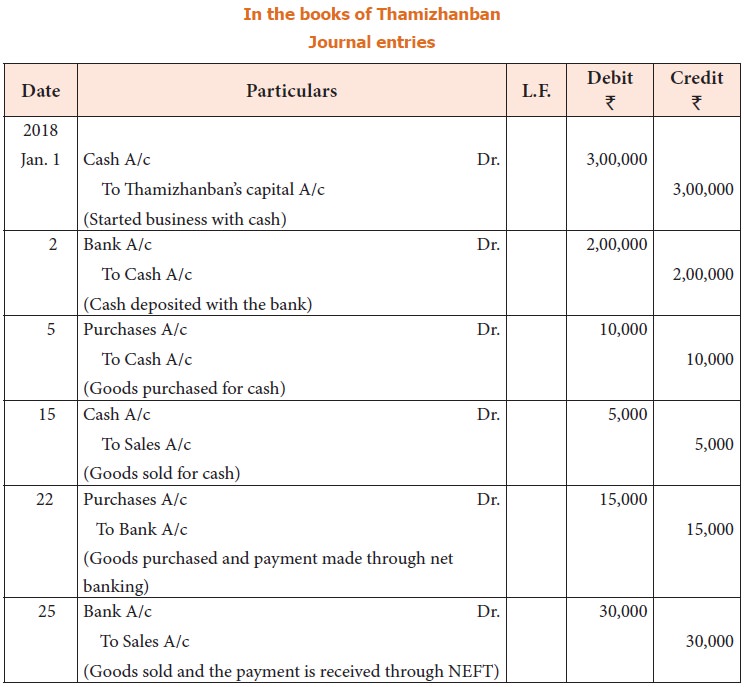
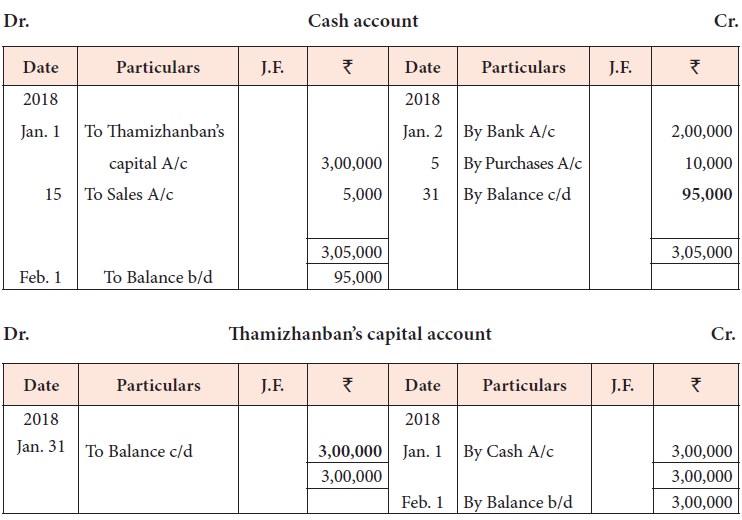
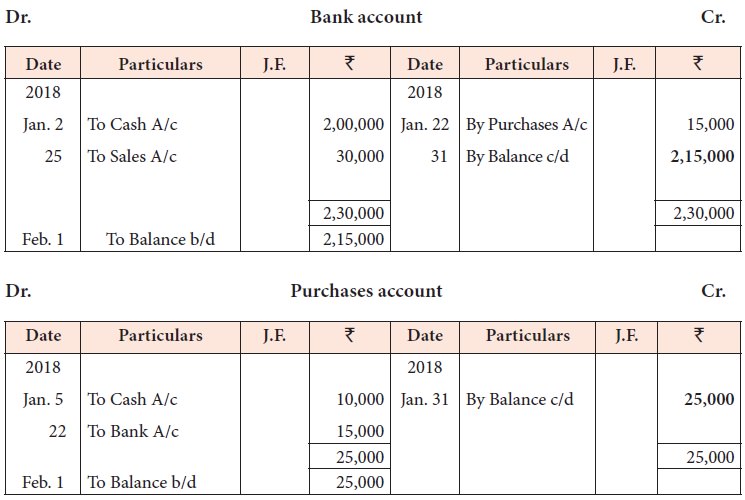

Illustration 6
Bharathi is a
sole trader dealing in oil products for the past five years. The books of
accounts showed the following balances on 1st April, 2018:
Cash in hand Rs. 25,000; Cash
at bank 3,00,000. The following transactions took place for the month of April
2018.
April 1 : Goods bought by giving cheque Rs. 30,000
April 5 : Goods sold to Naveen and payment received
through NEFT Rs. 40,000
April 6 : Goods sold to Xavier for cash Rs. 20,000
April 9 : Goods sold on credit to Abdul for Rs. 25,000
April 18 : Cash received from Abdul Rs. 10,000
Pass Journal entries for the above transactions and prepare ledger accounts.
Solution
In the books of Bharathi
Journal entries
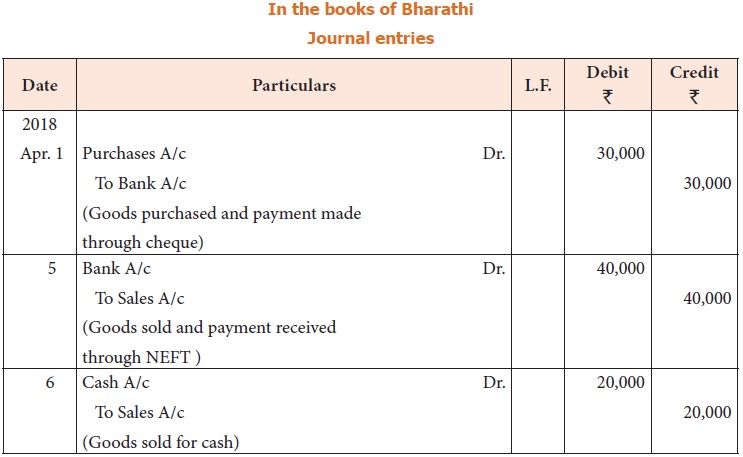
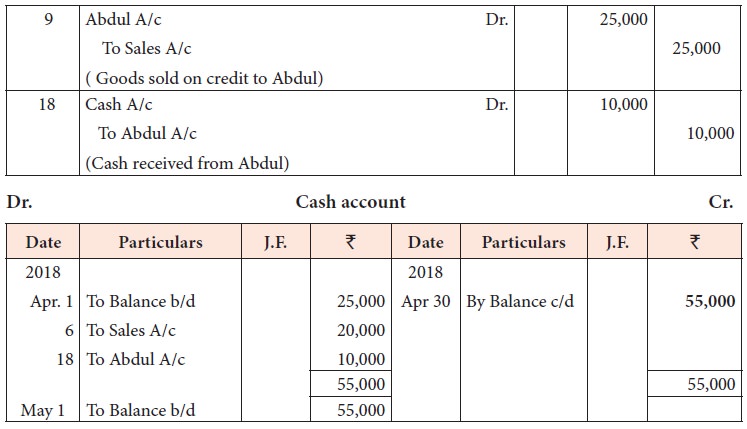
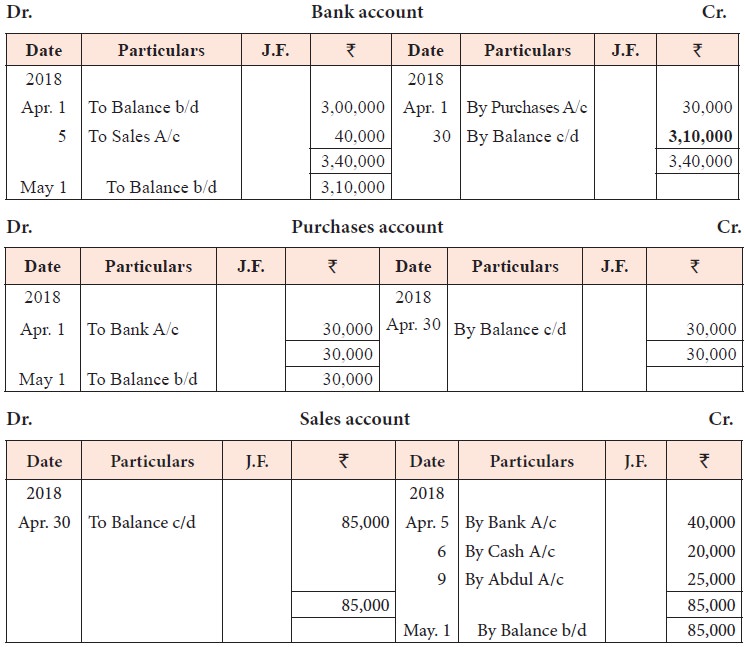

2. Direct ledger posting
Illustration 7
Prepare cash
account from the following transactions for the month of January 2018.
Jan 1 Commenced
business with cash Rs. 62,000
Goods
purchased for cash Rs. 12,000
Goods
sold for cash Rs. 10,000
Wages
paid Rs. 4,000
Furniture purchased for cash Rs. 6,000
Solution
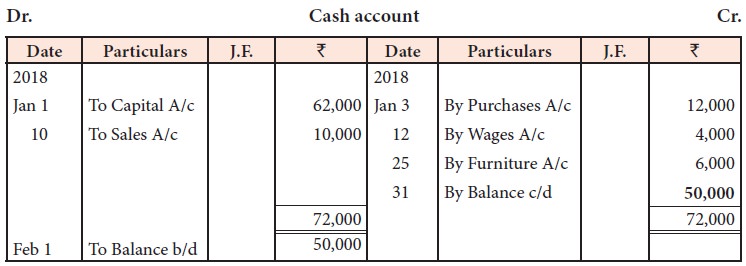
The following
are the transactions of Kumaran, dealing in stationery items. Prepare ledger
accounts.
2017
June 5 : Started business with cash Rs. 2,00,000
June 8 : Opened bank account by depositing Rs. 80,000
June 12 : Bought goods on credit from Sri Ram for Rs. 30,000
June 15 : Sold goods on credit to Selva for Rs. 10,000
June 22 : Goods sold for cash Rs. 15,000
June 25 : Paid Sri Ram Rs. 30,000
through NEFT
June 28 : Received a cheque from Selva and
deposited the same in bank Rs. 10,000
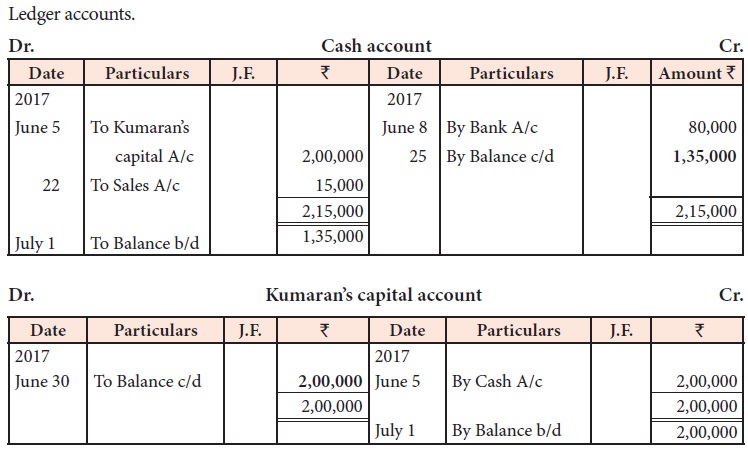
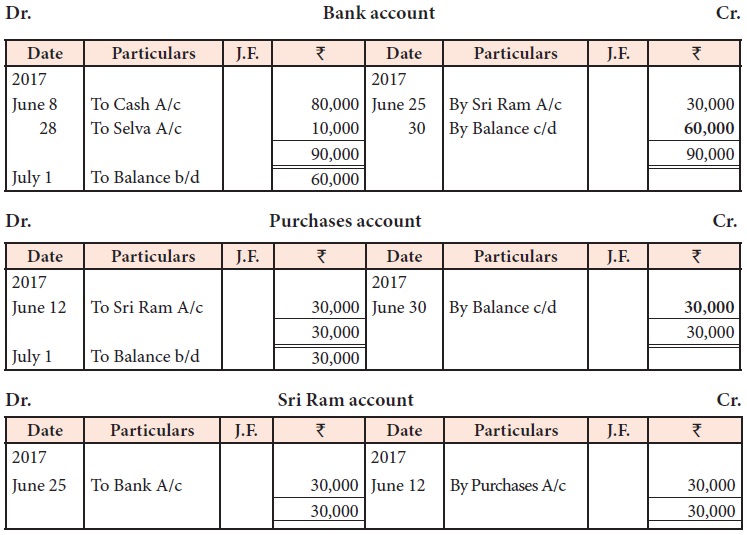
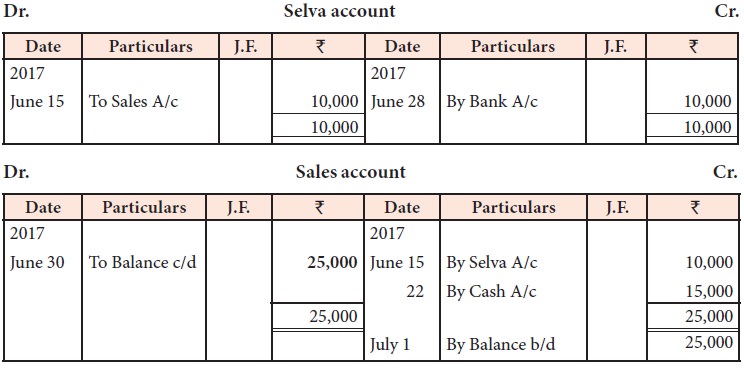
After posting
the journal entries to ledger accounts and extracting the balance of ledger
accounts, the trial balance is prepared. Trial balance is a statement which
shows debit and credit balances of all accounts in the ledger. It helps to test
the arithmetical accuracy of entries made in the journal and ledger.

Related Topics